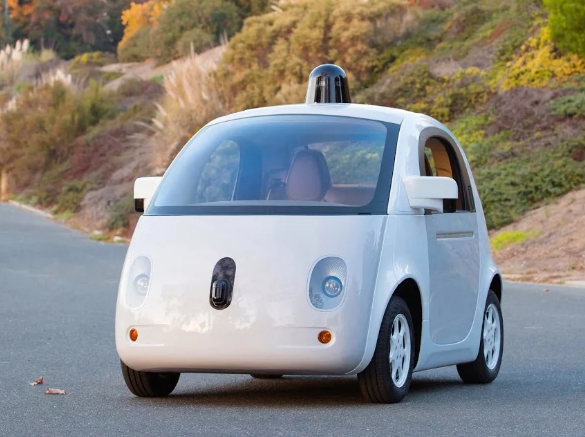 "pip bip - choose Corrour" (hhgttg69)
"pip bip - choose Corrour" (hhgttg69)
10/08/2020 at 08:20 ē Filed to: bbc, Autonomous Cars, emissions, climate change
 0
0
 8
8
 "pip bip - choose Corrour" (hhgttg69)
"pip bip - choose Corrour" (hhgttg69)
10/08/2020 at 08:20 ē Filed to: bbc, Autonomous Cars, emissions, climate change |  0 0
|  8 8 |

https://www.bbc.com/future/article/20201007-can-driverless-cars-tackle-climate-change
 Jb boin
> pip bip - choose Corrour
Jb boin
> pip bip - choose Corrour
10/08/2020 at 08:41 |
|
That is mostly BS, computing sensors datas is not something that will consume anywhere near enough energy to make any difference in mileage and would not add more than a few grams.
Itís a bit similar to peoples thinking that the 5G should not be deployed as it will push peoples to use more bandwidth and consume more electricity doing so.
 Urambo Tauro
> pip bip - choose Corrour
Urambo Tauro
> pip bip - choose Corrour
10/08/2020 at 10:17 |
|
This quote seems to sum it up nicely:
It turns out that the most crucial part of paring down emissions entails not just opting for robocabs over personal cars, but also sharing rides.
It all comes back to convenience. T hough driverless cars are often advertised as a solution for road safety, letís not kid ourselves- the consumerís main attraction is going to be the convenience . And ridesharing is rarely convenient . An y advances in making these things ďgreenĒ are going to be offset by increased usage.
 Urambo Tauro
> Jb boin
Urambo Tauro
> Jb boin
10/08/2020 at 10:19 |
|
Iíd like to see the numbers on how much power the ( non-powertrain) self driving tech actually uses.
 Jb boin
> Urambo Tauro
Jb boin
> Urambo Tauro
10/08/2020 at 10:32 |
|
Even if it needs as much computing power as a laptop (a phone is probably enough), it would still use only tens of watts at most, knowing that even a powerful laptop using all itís computing power (and having a screen ) can run for hours on a very small battery compared to what is even on a non electric vehicle .
If i am not mistaken, a classic car AC (not what is used on an electric vehicle) is the equivalent of multiple kilowatts.
 Urambo Tauro
> Jb boin
Urambo Tauro
> Jb boin
10/08/2020 at 12:00 |
|
Hm. After a couple of minutes googling, the number that keeps coming up for current (no pun intended ) self- driving systems is an estimated †2500 watts. Of course thatís gonna vary by car and equipment...
 Jb boin
> Urambo Tauro
Jb boin
> Urambo Tauro
10/08/2020 at 12:49 |
|
I donít know what could use so much power, lidar and cameras are not consuming much energy and as a comparison, a server with a Ryzon Threadripper 3990X (a server CPU with 64 cores/128 threads optimized for the processing power ) and a RTX 2080 Super (not stressed) consume at most 606W on 120v (i think that the Tesla battery outputs at around 400v so it would be more efficient ) .
 Urambo Tauro
> Jb boin
Urambo Tauro
> Jb boin
10/08/2020 at 13:13 |
|
A lot of articles seem to throw around that 2500 watt figure with little-to-no explanation. I wonder if this might be where theyíre getting it from:
We have built a rough model, with [telematics] spending a negligible amount of power, [video] needing 1 GPU at 750 Watts (W), 3D needing 1 CPU at 500 W. One needs at least double of each for redundancy and safety, leading to minimal 2500 W. We assume these values for driving in the city. On the highway, the situation is less complex, leading to fewer computations to make. We assume only 1500 W are needed for a highway. An average of 2000 W are assumed for a combined driving style of city and highway.
 Jb boin
> Urambo Tauro
Jb boin
> Urambo Tauro
10/08/2020 at 16:29 |
|
Doubling the systems makes sense but even so i would say that what they are currently running seems like itís not very optimized (yet) and hardware is evolving quite quick enough so that same processing power in 5 years would use half the power (and batteries would also have improved ) .